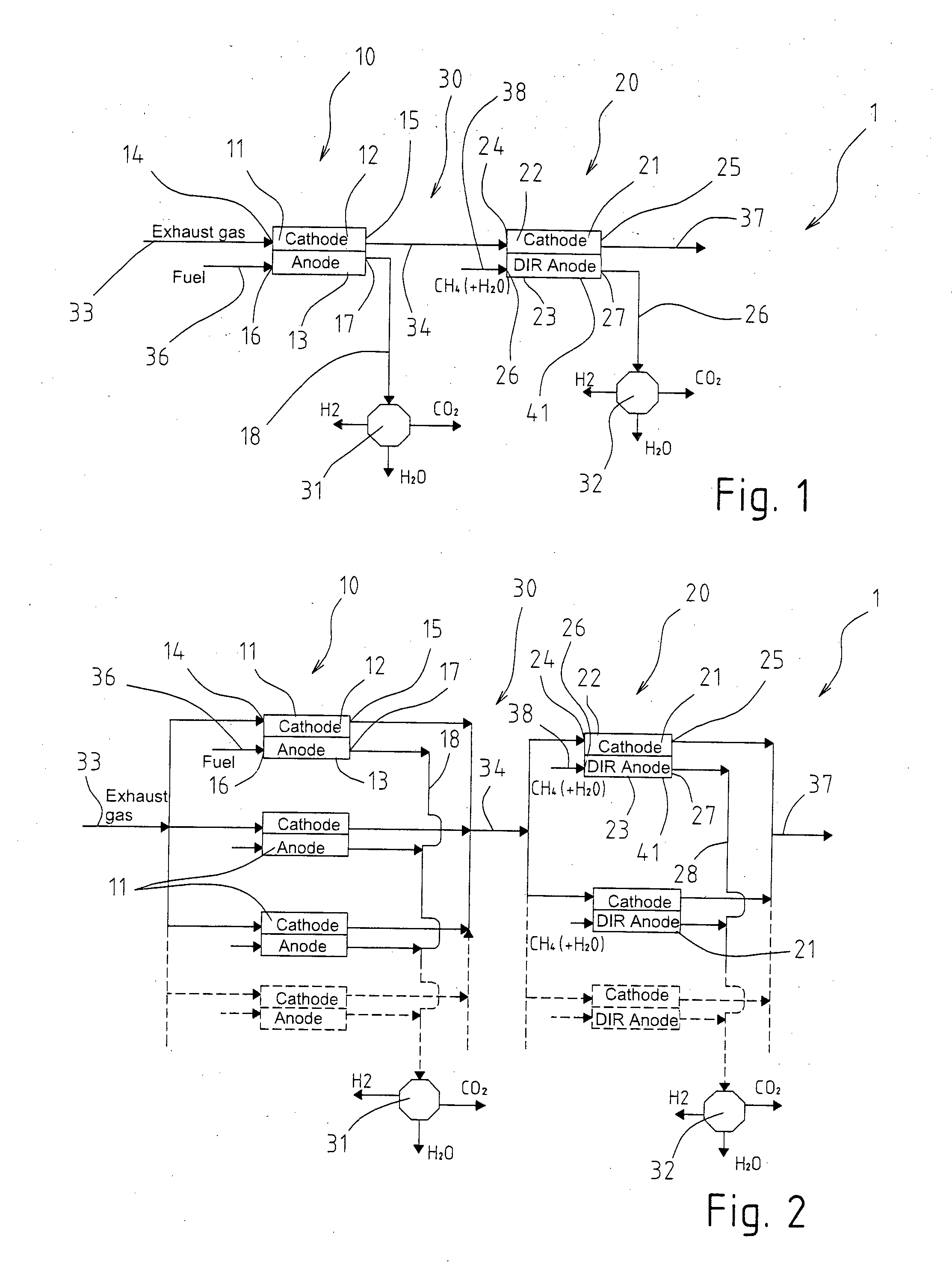System and method for separating co2 from combustion exhaust gas by means of mcfc multistacks
a technology of molten carbonate fuel cell and combustion exhaust gas, which is applied in the direction of fused electrolyte fuel cell, separation process, electrochemical generator, etc., can solve the problems of methane conversion, inconvenient use, and inability to meet the requirements of a large number of applications, so as to simplify water management, high electrical efficiency, and high performance
- Summary
- Abstract
- Description
- Claims
- Application Information
AI Technical Summary
Benefits of technology
Problems solved by technology
Method used
Image
Examples
Embodiment Construction
[0048]In FIG. 1 designated as a whole by 1 is a system for the separation of CO2 from combustion exhaust gas, in particular an MCFC-CCS system (i.e., a molten-carbonate fuel-cell system operating as separator of CO2 from combustion exhaust gas).
[0049]The system 1 comprises a first MCFC unit 10, a second MCFC unit 20, and a connection network 30 that connects the units 10, 20 to one another and to at least one, and preferably to respective, CO2-capture units 31, 32.
[0050]Each unit 10, 20 includes at least one MCFC 11, 21 and preferably a stack of MCFCs 11, 21; in any case, the cells 11, 21 of the units 10, 20 have respective cathodic compartments 12, 22 and respective anodic compartments 13, 23.
[0051]The cathodic compartments 12 of the cells 11 of the first unit 10 have a cathodic inlet 14, connected to a exhaust-supply line 33, which supplies the cathodic compartments 12 with an oxidizing gas flow made up, in particular, of combustion exhaust gas coming from an industrial plant that...
PUM
| Property | Measurement | Unit |
|---|---|---|
| energy | aaaaa | aaaaa |
| thermal management | aaaaa | aaaaa |
| electrical energy | aaaaa | aaaaa |
Abstract
Description
Claims
Application Information
 Login to View More
Login to View More - R&D
- Intellectual Property
- Life Sciences
- Materials
- Tech Scout
- Unparalleled Data Quality
- Higher Quality Content
- 60% Fewer Hallucinations
Browse by: Latest US Patents, China's latest patents, Technical Efficacy Thesaurus, Application Domain, Technology Topic, Popular Technical Reports.
© 2025 PatSnap. All rights reserved.Legal|Privacy policy|Modern Slavery Act Transparency Statement|Sitemap|About US| Contact US: help@patsnap.com



